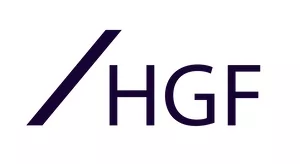As reported by our colleague Joanne Meredith in her recent post (click here to read), Phase One of the EU's "Design Reform Package" became effective on 1 May 2025, with Phase Two coming into effect on 1 July 2026. But what does the Reform actually do and what does it mean for businesses operating in the food and drink industry?
The Design Reform Package has been a refreshing update to the existing EU legislation which had been largely unchanged since the 1990s. The EU legislation was outdated and unable to offer concise guidance on the issues the digital age has raised. This Reform sought to modernise and evolve the legislation to reflect the digital design practices, such as 3D printing, that businesses have become accustomed to, as well as better aligning the law with other IP practices such as trade marks and copyright.
The most relevant changes the Reform has/will bring about for those in the food and drink industry are:
An Expanded Scope Of Protection (Effective 1 July 2026)
The Reform Package has given broader definitions for 'design' and 'product', meaning that applicants will enjoy a greater scope of protection.
Definition of 'Design'
The definition of 'design' now encompasses "movement, transition or any sort of animation". This provides an opportunity for digital designs to obtain protection as well as offering protection for new features of the appearance of a product e.g. visual effects.
Definition of 'Product'
The definition of 'product' has been broadened to provide digital designs protection and expressly includes graphic works, surface patterns, logos and graphical user interfaces. The idea that a product can take physical or non-physical form means that the definition has broadened enough to include "spatial arrangements of items intended to form an interior or exterior environment" e.g. the layout of a restaurant.
Given the growth in use of augmented and virtual reality in marketing campaigns and dining experiences within the food and drink industry, the definition expansion of 'design' and 'product' means that companies will have better protection for these digital designs. For example, the use of augmented reality to create a filter that allows users to catch marshmallows using their mouths to advertise the Ben & Jerry's® brand would have the opportunity to be protected as a design.
Not to mention it opens the door for restaurants to potentially obtain design protection for their "spatial arrangements" e.g. the Mowgli Street Food® restaurant layout that has its unique swing seating.
Simplified Fee Regime (1 May 2025)
The Reform has introduced a simplified fee regime. The design fee for the EUIPO is still EUR 350, but each additional design in a multiple design application has reduced in cost to EUR 125 each.
However, the renewal fees will be significantly increased, with the exception of international registrations designating the EU.
Change In Terminology And The Introduction Of Ⓓ Symbol (1 May 2025)
Although the fundamental definitions of the rights remains the same, the terms "Registered Community Design" and "Unregistered Community Design" have been replaced with "Registered European Union Design (REUD)" and "Unregistered European Union Design (UEUD)".
The EU have developed a registered design symbol, meaning holders of REUD will be allowed to use a Ⓓ symbol. This is similar to the Ⓡ symbol for registered trademarks or the © symbol for copyright.
Changes To The Enforceability Of Designs (1 May 2025)
Alongside the broader protection offered through the expanded definitions of 'design' and 'product', an EU design can now:
- Be used as an enforceable right to stop 3D printing activities. This means any unauthorised third party that is creating/distributing digital files can be challenged.
- Be used against counterfeit products that are in transit through the EU, even if they are not released in the EU. This aligns the EU design with the position for EU Trade Marks.
'New' defences to the use of a design have also been introduced to align the legislation with the existing copyright regime. Specifically, one can use protected designs without the consent of the owner for the purposes of comment, critique or parody.
Unity Of Class (1 May 2025)
The Reform has abolished the need for designs in the same application to have the same Locarno class. This means that you can file for multiple design applications covering designs that fall into different classes, without restriction. For example, if you were seeking protection for dog treats (class 1), the graphic design of the label (class 32) and the packaging (class 9), previously you would have likely had to file separate applications. However following the reform, this can be done in one application.
The multiple design application is still limited to 50 designs though. Therefore if protection is required for more than 50 designs, separate applications may be still be required.
New Representation Requirements (1 July 2026)
Design applicants will be pleased to hear that from July 26 the number of views per design application will no longer be limited to seven. This will be particularly useful to those expanding protection, for example of a design patent applied for in the United States, to the EU.
(No) Visibility Requirement (1 May 2025)
Although a component part in a complex product must be visible during normal use to have protection, the features of a non-complex product do not have to be visible to benefit from protection.
Changes To Grounds For Refusal
EU design applications can now be refused on the grounds that the design misappropriates (wholly or in part) elements of cultural heritage that are of national interest.
To conclude, from a practical perspective, the Reform:
- Widens the scope of what you can protect as a design, including virtual reality designs;
- Allows you to have greater freedom by having multiple design applications covering designs that fall into different classes;
- Provides stricter grounds to stop or prevent third parties from infringing your work; and
- Streamlines the application process and the change in fees suggests it will be more cost effective for Applicants at the filing stage.
The content of this article is intended to provide a general guide to the subject matter. Specialist advice should be sought about your specific circumstances.



